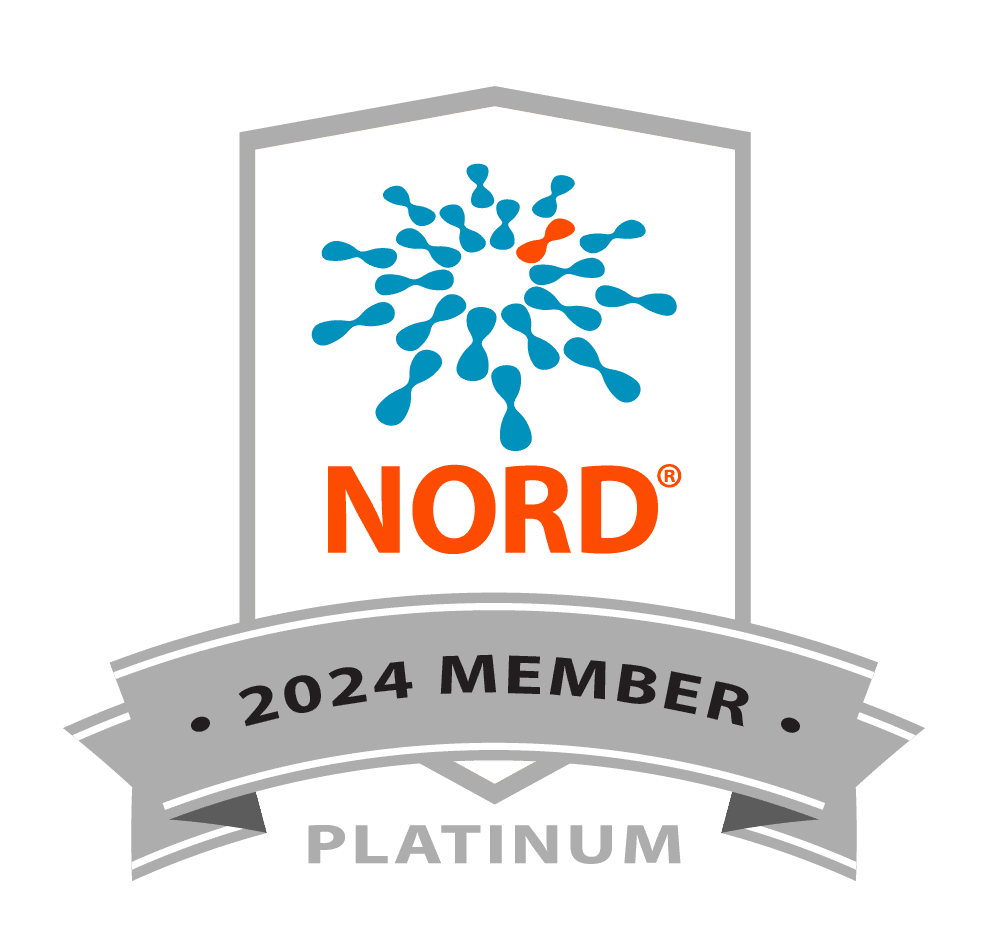Aging With a Rare Neuroimmune Disorder
October 9, 2021
Dr. Daniel Becker talked about “accelerated aging” after a CNS injury and how after a period of years of relative stability, there is slow progression of symptoms with aging. He discussed the need for aggressive rehabilitation and emphasized the role of exercise to help offset this process, including recreational therapy and adaptive sports.
PDF TRANSCRIPT
Transcript
[00:00:00] Roberta Pesce: Welcome back, everyone. If you were diagnosed with ADEM, AFM, MOGAD, NMOSD, ON, or TM, you may be thinking about aging and the changes you might expect. I am joined today now by Dr. Becker, board certified neurologist, spinal cord injury medicine specialist, disability analyst and director and founder of the International Neurorehabilitation Institute, who will discuss the effect of aging on people with rare neuroimmune disorders. Dr. Becker, the floor is yours.
[00:00:37] Dr. Daniel Becker: Wonderful. Thank you very much for inviting me, and thanks to the society to have me here this weekend. I know last time we did this several years ago down in Dallas, and hopefully we can do it in the future like that again. So, I was given a fairly gloomy topic today, talking about aging with a rare neuroimmune disorder. I have to kind of warn the audience, it might be a little bit negative at the beginning, but I promise I’m going to end on a more positive note as we go forward. So, I have my disclosures set up here.
[00:01:11] And now as we talk about aging in general, there’s the famous saying is we start aging the moment we are born, and that seems pretty true. And overall, we’re talking about the gradual changes that involve most body systems. There’s really almost no system in the body that’s not affected. In general, we think about aging, that usually occurs more around the age of 30. So up until that time point a lot of systems, including the brain, still develop, and then from that point on it goes downhill, unfortunately. There seem to be a reduced ability to respond to environmental stressors that then in turn lead to increased susceptibility and vulnerability to any kind of disease.
[00:02:01] And over time mortality, and sort of risk of dying due to all causes, increases exponentially as we get older. There was a beautiful paper published earlier this year in “Nature” that was trying to assess, how long could humans theoretically live based on their genetic makeup? And so, it turns out some range between 120 and 150 years. And as you know, very few people get that old. But that seems to be the barrier how old we normally could get. So, I said all the systems in the body are involved, but here we are talking about the immune system a little bit more.
[00:02:48] So if we just look at the aging of the immune system, we know that as we get older, we seem to have a decreased ability to fight infections. We seem to have diminished responses to vaccinations, and you can see that all in the news currently as we’re discussing COVID-19 vaccines in elderly people and the flu vaccines that’s currently being given. There seems to be an increased incidence of cancer. Most people tend to forget that our immune system is actually, in a large part, responsible for fighting cancer cells in our bodies. And we can have a whole talk about this for several hours. There seems to be a higher prevalence of autoimmunity as we get older, and we see a generalized lower levels of inflammation throughout our body.
[00:03:38] Once you’ve had an injury to the central nervous system, like the spinal cord or the brain, we also know that you seem to have a slightly increased risk, as compared to the general population, for strokes, for heart attacks, for heart failure, for osteoporosis and infections in general. And to come to the topic of what we’re going to be talking about today, the most common symptoms of aging after a neurological injury includes usually a slow symptom progression.
[00:04:16] And we get these questions all the time in clinic, and then Roberta was nice enough to send me a couple questions that you guys have been sending to the society over the last couple years, where people describe that they had a period where everything is stable. They had the injury. You had your transverse myelitis, or you had your attack from your NMSOD, and then everything was stable. But then as we get older, suddenly things started to get worse. And this sort of slow symptom progression is what we commonly see after a neurological injury. And the other part that’s important that is there’s a lack of an anatomical correlate. And I’m going to explain this a little bit better in the next couple slides.
[00:05:02] So number one, the things that we see in terms of symptom progression is most people complain of progressively getting weaker. This could be the arms, could be the legs. People have more and more difficulty with gait as they get older, even though we told them, especially in my transverse myelitis clinic, “You had a transverse myelitis event and this is a one-time event, and everything should be stable or getting better.” But, unfortunately, not in all of us. And so, some people will have, as they get older, this progressive decline of function, where we then always wonder, “Why is it happening?” One part see-mails to be very responsible for a lot of this change is an increase in spasticity, meaning a muscle stiffness.
[00:05:45] Other things that we see that people describe is worsening in bladder function, so much more need of seeing a urologist. Some people will at some point start using intermittent catheterization, even if they didn’t require that previously. Bowel dysfunction can happen, and neuropathic pain, so nerve pain, can really get worse over time. And when I said we have a lack of an anatomical correlate, what that means is usually when we see those changes, we, as providers, we always get concerned. We wonder, “Why is it happening? Does our patient have a relapse? Is there a new disc pushing on the spinal cord? Is there something else happening?”
[00:06:27] And so usually what we see here is that there are no new lesions that we see anywhere on the MRI of the brain or on the spinal cord, and we have to make sure there are no other conditions contributing. For example, as we get older, we have a higher risk of diabetes, peripheral vascular diseases, or other neurological conditions that could essentially lead to these changes. So, in a normal aging with a rare immunological disease, we don’t see any confounding processes going on. And so, in our clinic we have given this actually a term. We call this an accelerated aging process. So why accelerated? Because, as I said earlier, age 30 is kind of the time when everything sort of becomes a little bit more of our body starts falling apart, we get older. We’re losing muscle mass. We’re losing strength, mobility. But that process happens to all of us.
[00:07:24] But after an injury, particularly to the spinal cord, we see that this process seems to be faster, so there’s a much higher rate compared to you with the injury as compared to one of your friends, same age, who didn’t have that injury. So, we call that accelerated aging. And unfortunately, we do not exactly know why this is occurring. So, as I said, that’s the gloomy part of this talk. So, we know it is happening, but we don’t know why. And it also does not seem to be specific to a particular type of injury. So, we can see this in transverse myelitis. We can see this in multiple sclerosis. We can see this in neuromyelitis optica spectrum disorder, and even we can see this in spinal cord injury, amongst other diseases. So that’s the unfortunate part.
[00:08:16] You want to ask what can we do about it? And we get that question all the time in clinic, and unfortunately there is really no pharmacological intervention, meaning there’s no pill. There’s no infusion. There’s no injection that can offset this process. I mean, if we could, I think this would be the holy grail in finding the anti-aging agent. And unfortunately, we’re stuck with what we call symptomatic management, meaning we have to treat the spasticity. If there is walking disability, you might need canes, walkers, wheelchairs over time. So that’s what we refer to as symptomatic management, unfortunately.
[00:08:59] However, I said it was going to get a little bit more positive. In our experience, an aggressive physical rehabilitation program, in addition to exercise in combination with function electrical stimulation, can help slow down or offset some of this process. And how should patients manage the aging after the CNS injury? So, as I said, exercise is the key, and exercise is always a fun one when I talk to my patients because I say, “Are you exercising?” And they say, “Of course I do.” And I say, “What do you do?” “Well, I walk to the kitchen, and I walk to the mailbox.” And I always have to say, “No, this is not what we talk about when we talk about exercise.” Exercise means anything that you do beyond your day-to-day regimen.
[00:09:50] So it means you have to take an hour, well at least half an hour to an hour out of your day at least three to five times a week and do something that you wouldn’t normally do. So, this could be as simple as like a 20-minute walk. You want to stretch on a regular basis. You want to keep a healthy weight and healthy diet is a big one here as well. And what can you achieve when you do that? You can definitely reduce fatigue. You can help with the bowel and bladder function. It helps definitely with depression. You can increase your endurance. You increase and improve your joint flexibility. You can help maintain bone health. One of the things that I mentioned earlier that happens sort of with that accelerated aging is the increased risk of osteoporosis, and I know Dr. Sadowski was speaking earlier. She’s an expert in that field.
[00:10:48] Cognition is a big one. So, maintaining cognitive function is something that’s absolutely imperative for your day-to-day living, and exercise has been shown to make a great deal of impact in there. So, but you don’t have to do all these things in the setting of a physical therapy gym or in your basement or in your kitchen or wherever you’re trying to do exercise to kind of help offset that accelerated aging part. You can also go a little bit more non-traditional.
[00:11:21] So people who know me and who know my office know that we have heavily invested in what we call non-traditional rehabilitation interventions. The big one here is what we call recreational therapy, which essentially uses recreation and other activity-based interventions to address the needs of our patients after the injury has occurred. And the biggest one here is adaptive sports. With that you can not only achieve physical health recovery and well-being, but also the psychological recovery. And as I said, you should be able to try to take the activities that you used to be enjoying for your injury and take them outside in the field again. And a couple examples I have here on this slide.
[00:12:10] So I remember years ago we started doing this with a scuba diving program with the help of Cody Unser’s Foundation. And then we moved it out into skiing, adaptive skiing, adaptive snowboarding. You see the top picture that’s adaptive surfing. Horseback riding. Go mountain biking. Snowboarding, rafting, canoeing, all these things that you can do in order to essentially use exercise and help offset the process that we were just talking about.
[00:12:49] And when I see patients in clinic, and we talk about accelerated aging and they come with the sad story where they say, “I used to be able to go hiking with my wife or go biking with my relatives, and now I can’t do this anymore.” And there’s where I really have to say, “That’s absolutely not true.” If this is an activity that you used to enjoy, there is a way of making this work for you. And there are wonderful organizations all throughout the country and the world that will help you with that. And if you’re interested, I’ll be happy to get you in touch with some of them. One of our favorite ones is the Adaptive Sports Center in Crested Butte, Colorado. It’s essentially a group of people who don’t know the word no, and if there’s an activity they’d like to do, they usually can make it work for you or they know somebody who can help you do this.
[00:13:45] So overall, in summary, we all get older. The process starts really once the moment we are born, more so at the age of 30. People with a neurological injury have an accelerated aging process, but it doesn’t mean there’s nothing you can do about it. So physical activity seems to be one of the key ingredients in here to pursue. And you don’t only have to do this in the boredom of your basement or a physical therapy gym, but you can take this out into the community, do the things that you like, that you enjoyed. Share it with as many people as possible. And with that, you can really make a big impact on slowing down that process of aging. And with that, I thank you for your attention and hopefully we can do this again in the future, but in person. Thank you, Roberta.
[00:14:42] Roberta Pesce: Great. Thank you so much, Dr. Becker, for your time.



